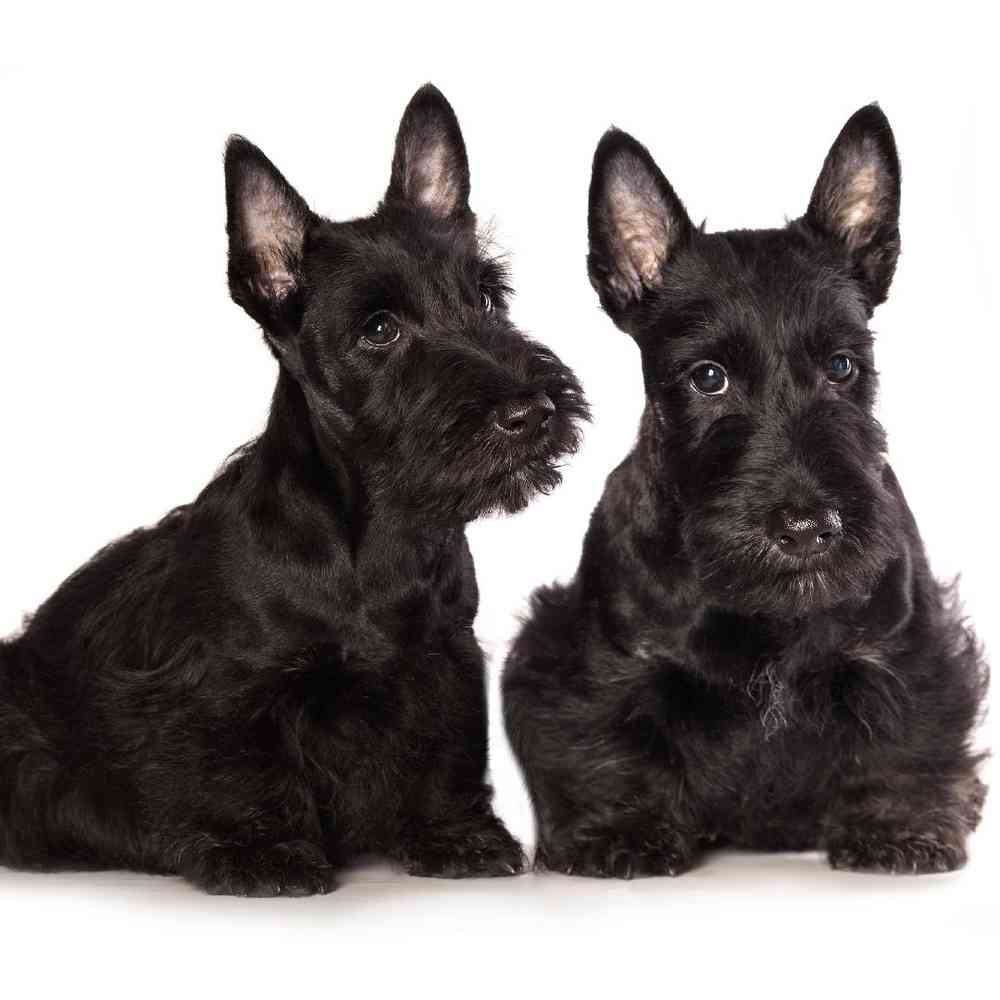Scottish Terrier

A solidly compact dog of vivid personality, the Scottish Terrier is an independent, confident companion of high spirits. Scotties have a dignified, almost-human character. Their terrier persistence has earned the breed the nickname “the Diehard.”


Want to know more about Scottish Terrier ?
Breed Traits
About
The well-known Scottie silhouette is that of a short-legged but substantial terrier with distinctive furnishings at the beard, legs, and lower body. The wiry topcoat and soft, dense undercoat coat can be black, wheaten yellow, or a brindle-stripe pattern. Bright, piercing eyes, and erect ears and tail, convey keen alertness—a hallmark of Britain’s terrier breeds. The Scottie working style has been described as efficient and businesslike, and their aloofness toward strangers makes them excellent watchdogs. Their hunting instinct remains strong, which can complicate life for the neighbor’s cat, and Scotties are known to be cantankerous around other dogs. This bold and clever Scotsman enjoys brisk walks and upbeat play.
History
Standard
Nutrition
Grooming
Exercise
Training
Health
General Appearance
The Scottish Terrier is a small, compact, short-legged, sturdily-built dog of good bone and substance. His head is long in proportion to his size. He has a hard, wiry, weather-resistant coat and a thick-set, cobby body which is hung between short, heavy legs. These characteristics, joined with his very special keen, piercing, "varminty" expression, and his erect ears and tail are salient features of the breed. The Scottish Terrier's bold, confident, dignified aspect exemplifies power in a small package.
Size, Proportion, Substance
Head
Neck, Topline, Body
Forequarters
Hindquarters
Coat
Color
Gait
Temperament
Faults
Clubs, Registries & Associations
American Canine Association Continental Kennel Club Universal Kennel Club International American Kennel Club United All Breed Registry America's Pet Registry, Inc. United Kennel Club (Based on breed recognition. See store for details on this particular puppy.)
Group
Heritage
Description
Health Awareness
Exercise/Energy Level
Additional Information
Interesting To Know
A Scottish Terrier is one of the playing pieces in the game Monopoly The only dog breed to live in the White House more than three times with President Roosevelt, President Eisenhower, and President George W. Bush. Juicy Couture and Radley Handbags both use Scottish Terriers as part of their logos.
All pets have found there homes! Sign up to be notified when new pets are added so you don't miss out.







